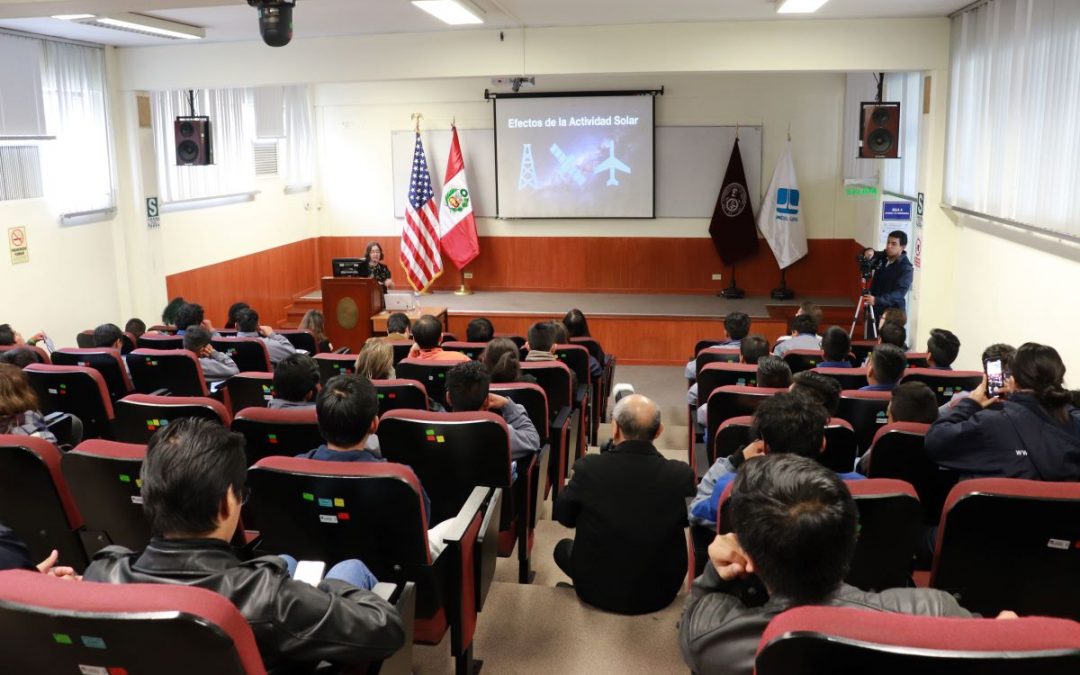A research group found an opportunity to predict the solar magnetic field during the total solar eclipse of July 2, 2019, taking full advantage of the time to calculate the measure between its variations. They created the airborne infrared air spectrometer, which is used from an airplane at 14 km.
The words of welcome were given by the director of INICTEL, Mg. Daniel Díaz, who thanked the Embassy of the United States for organizing and promoting this event.
The exhibition of the investigation was in charge of Naylynn Tañón.She is an astrophysics student at San Diego Mesa Universityand part of the research group of the solar physics part of the Astrophysics Center of the Harvard & Smithsonian Institute. She was an intern and worked at NASA.
During her important exhibition, Naylynn described the sun and its seven layers:
• Crown
• Transition zone.
• Chromosphere.
• Photosphere.
• Convective Zone.
• Radiation Zone.
• Nucleus.
She and her research group have a big question: Why does the temperature rise when one moves away from the sun? :
|
LAYER |
TEMPERATURE |
|
Photosphere |
5,800 K |
|
Chromosphere |
4,000-10,000K |
|
Transition region |
10,000K-1,000,000K |
| Corona |
1,000,000K-3,000,000K |
Naylynn and her group of solar astrophysical researchers believe that the answer to their big question is in the Corona layer and its magnetic field, which with solar activity: Solar Flare (Class X), Filament Eruption, Ejection of Coronal Mass, generates negative effects on planet Earth as problems in telecommunications.
She mentioned the questions that revolve around her and that still have no answer:
• What causes the warming of the corona?
• How do we predict solar activity?
Through the Zeeman Effect, they were able to detect changes with and without magnetic field, but the Zeeman division can not be detected. Therefore they want to measure between those variations to achieve Magnetic Field Prediction.
The group found an opportunity to Predict the magnetic field during the Total Solar Eclipse of July 2, 2019, to calculate the measurement between the variations. For this, they built the Airborne InfraRed Spectrometer AIR-Spec, which they use from an airplane at 14 km., The goals to achieve are:
1. Characterize the emission lines.
2. Measure the intensity gradient.
3. Diagnose the temperature and density.
This has given rise to project ideas on a large scale: Globe with a coronagraph and the Satellite with a topographer.
Naylynn Tañón concluded by explaining that they still do not understand the Sun.Sun is powerful and violent. The magnetic fields are the key and understanding that in the infrared is future.
The astronomer Chad Madsen, who is part of the Harvard-Smithsonian Center for Astrophysics was also present at the event.
The research group shared additional material:
• Project summary
• Chapters of 1
• Chapter 2 and 3 of the thesis of Dr. Jenna Samra on the instrument.
The event held at the Embassy of the United States, and in coordination with the Vice-Rector for Research VRI and the Telecommunications Research and Training Institute INICTEL




